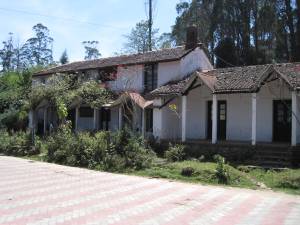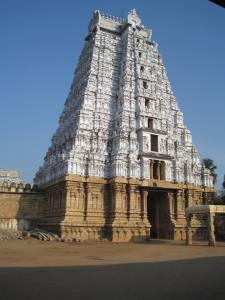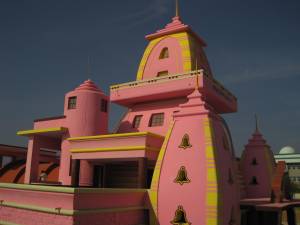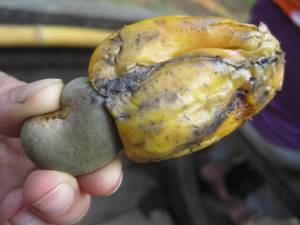
After finishing our 4 day holiday, we thought we would throw ourselves right back into the mix, i.e. incredibly stressful, sleep deprived, exposures to the true horrors of India, etc…
Things started as they would go on – frustratingly and difficult. Due to our limited mathematical skills, we had wrongly worked out when we would arrive in Bhubaneswar (BBS) – which would form our jumping base for the next week. As a result, we turned up there 2 days early cutting short our holiday completely unnecessarily. We had been in touch with our contact in BBS and told him that we had made a mistake and would it be ok to come a few days early. He reassured us it would be fine, but when we arrived it turned out that he wasn’t going to be there for two more days. Oops. Minus one Basic Communication Point…
No matter. He told us that we could go to the office and do some research. After the hassle of trying to get to Puri, we also thought we would book our train tickets earlier this time. We found a train for the 5th (the only train that wasn’t Wait –Listed [1]). This was a few days before we had wanted to leave, so we phoned our contact to check if he thought we would be able to get everything done in this shorter time. “No problem,” he told us. “Go ahead and book it.” 2 days later, he asked us if we were going to still be in BBS on the 5th as there was a very big meeting taking place which we should attend..! Minus 3 Basic Communication Points.
After booking the train, we headed for the office to do some much needed research. Unsurprisingly, when we arrived no-one knew what information we were after, and we didn’t have specific requests as we’d been assured there was loads of stuff we would be given. But with some help we found more than we could digest and got stuck in. The scale of the agricultural crisis in India is phenomenal, but this will be discussed in further blogs…
After meeting our contact on the 30th, we had our itinerary for the next week. Stop 1: an interview with a toothless man who has been involved with fight against ‘modern’ (non-sustainable market driven – chemical pesticide and fertiliser heavy) farming techniques and the struggle for the promotion of traditional (sustainable, organic, farmer led) methods. He also is in charge of a seed sharing project – they have collected 350 varieties of indigenous rice (a tiny proportion of the original amount). Apart from the fact that he did not directly answer any of our actual questions, he was amazing. He talked virtually non-stop for an hour, covering a variety of topics from the birth place of rice, climate change, dams, multi-national corporations and alternative agriculture.
Stop 2: North Orissa and a farming community promoting sustainable farming. We had to wake up at 5.45am to get here so we hoped it would be worth it. We were told there would be someone to meet us at the train station; they would know who we were because we would be the only white people. A ricksaw didn’t seem possible, so all 3 of us climbed onto our guide’s motor-bike (a common sight in India) and made our way to the meeting hall. “Don’t worry,” our contact had said when we asked how exactly we are supposed to interview 45 people all at once, “we wouldn’t put you in a difficult situation.” Luckily, as it turns out, it not that difficult to interview 45 people all at once (minus one Basic Communication Point)…
We got ushered into a meeting, being greeted with lovely flowers, and were told to sit at the head of a growing group of people. We sat and we sat and we sat and nothing was said – people seemed content just to stare at us – and then we were beckoned to leave and were given a bunch of food, then invited back to the meeting. We spent the next 2 hours doing a QandA with the group. We were then treated to local organic lunch on plates made of leaves. Embarrassingly, I was unable to finish mine. It seems that desperate “no” signals when offered a second enormous portion of rice, only drives them to give you more!
After lunch, we interviewed 3 farmers back-to-back. Concepts of a break don’t seem to exist. On top of this the interviews took 3 times as long as most interviews I’ve conducted as we did not share a common language. The farmers discussed how they had either always used traditional methods because it was what their forefathers had done, or how they had tried to use intensive methods but had found they didn’t work – they did not have the funds for the fertilisers, the pesticides, the seeds themselves and the irrigation, plus they didn’t really like the taste of hybrid crops.When we had bought the train tickets to this destination, our contact had told us to book returns (in India you can’t get returns so you get two singles) so we did. We were therefore confused when we headed to a town an hour and a half away to sleep… We ended up getting ‘top-up’ train tickets. Minus 2 Basic Communication Points.
The following day was always going to be grim, but it started much earlier than we had expected. “Josh, I think that’s the fire alarm!” Lucie squawked at 5.05am. “Don’t be silly, they don’t have firm alarms in India,” I replied. But she had a point. There was the constant ringing of a bell, which was accompanied by terrible and very loud music. Still believing this had to be something other than absolute stupidity, Lucie got up to see what was happening. It turned out there was a man in a yellow robe ringing a bell in the lobby of the hotel – which was opposite a temple blaring out tunes from its loudspeakers straight into the hotel. The music went on till 6.30am!
In the morning, I asked what the music was about. “For the temple,” responded the hotel manager. “Does this happen every morning?” “Oh, yes,” he said smilingly, utterly oblivious to the fact that some people who pay to stay in his hotel might not find this an endearing feature.
We had planned the day before to meet up with the secretary of the farmers’ community group and discuss stuff at 9am. At 9.30am he still hadn’t turned up. We called him and were told someone would come and pick us up “immediately”. At 10.30am someone turned up with a note saying that the secretary was sorry he couldn’t meet us, but something urgent had come up and he had had to go, but someone would come and pick us up at 11am and take us to their office, where we could do some research. Grrrr….We went to the office, but no one had a clue what we wanted. “What documents do you want?” “We don’t know, we were told there was stuff we could look at, we thought the secretary would be here, he was going to chat to us…” I think the people we met through-out those few days thought we were a bit stupid because we would turn up at a resource centre and not know what we wanted. The problem was, we were told (every time by someone who wasn’t there when we arrived) that the people at the centre would know what we wanted and we should just ask. FRUSTRATING.
After getting some documents, we caught the train back to BBS. We had a night bus to catch at 9.30pm. Our contact had told us “it might not be like UK night buses, but you get a good night’s sleep. I catch it all the time. You can wake up in the morning and get on with work”. I admire him for being able to do this. “Sleep” is not the correct word to describe what I had to go through that night. Cold, uncomfortable and stressed, we “woke” at 4.30am and stumbled of the bus. Yes, the bus arrived at 4.30am. A hotel had been booked for us, which a rickshaw driver took us to. You can check in in a few hours, we were told. “What!? Fine we’ll sleep on your sofa.” The hotel manager both took pity on us and achieved some amount of rationality and so let us move into our room a couple of hours early.
The next day (6 hours later, though Lucie had to wake up at 9am to ask the interviewees if they could come at midday instead of nine thirty…) was by far the hardest. Of course, no-one was there to meet us at midday. At 1.30pm a farmers’ trade union leader finally appeared in our hotel. It seemed he didn’t want to be seen with us (understandable as people on the front line of challenging the state and multinationals regularly end up face down in ditches or just banged up in prison under false charges) so we went to our hotel room. 5 hours later we were able to leave this room. In the meantime several people had entered it and expunged the entirety of their thoughts on the agricultural crisis in India upon us. We emerged shaken and exhausted having had to refuse a late comer: “No, I’m sorry, but no, no more interviews!”
Our work was done, but our endurance had to be stretched a little further the following day when a train which was meant to take 6 hours ending up taking (including waiting for it) 9. Pretty standard, but a long day… Luckily, there’s nothing I like more than reading in a train station and occasionally getting shat on by pigeons…
We are now officially going on holiday again (Tamil Nadu and Kerala), but will fill you in in much more detail on everything we have learnt in the past week.
One final point, while our contact’s communication skills were somewhat lacking, it should be said that this was made up for by all his hospitality, political insights, passion and commitment to this cause.
[1] The train system in India is, when you first arrive, excruciatingly complicated and confusing – the train stations moreso. Once you know it, it’s just irrational and frustrating (the stations remain totally confusing whatever you do, it seems). Tickets are available, wait-listed (meaning you can hope that the tickets the big travel agents have bought will be sold back to the train service), or RAC (dependent on someone’s cancellation). Available is obviously the best option. You can also opt for TATKAL, an emergency (not really an emergency) option 48 hours before departure, or FTQ (foreign tourist quota) if you’re lucky enough to be in a “metropolitan” capital (not Bhopal!) from which they can book them. This complicated system is saturated in bureaucracy, and you will probably have to fill in at least 2 forms just to get to the ticket counter! On top of all this, you can no longer book tickets online if you don’t have an Indian debit card…


















